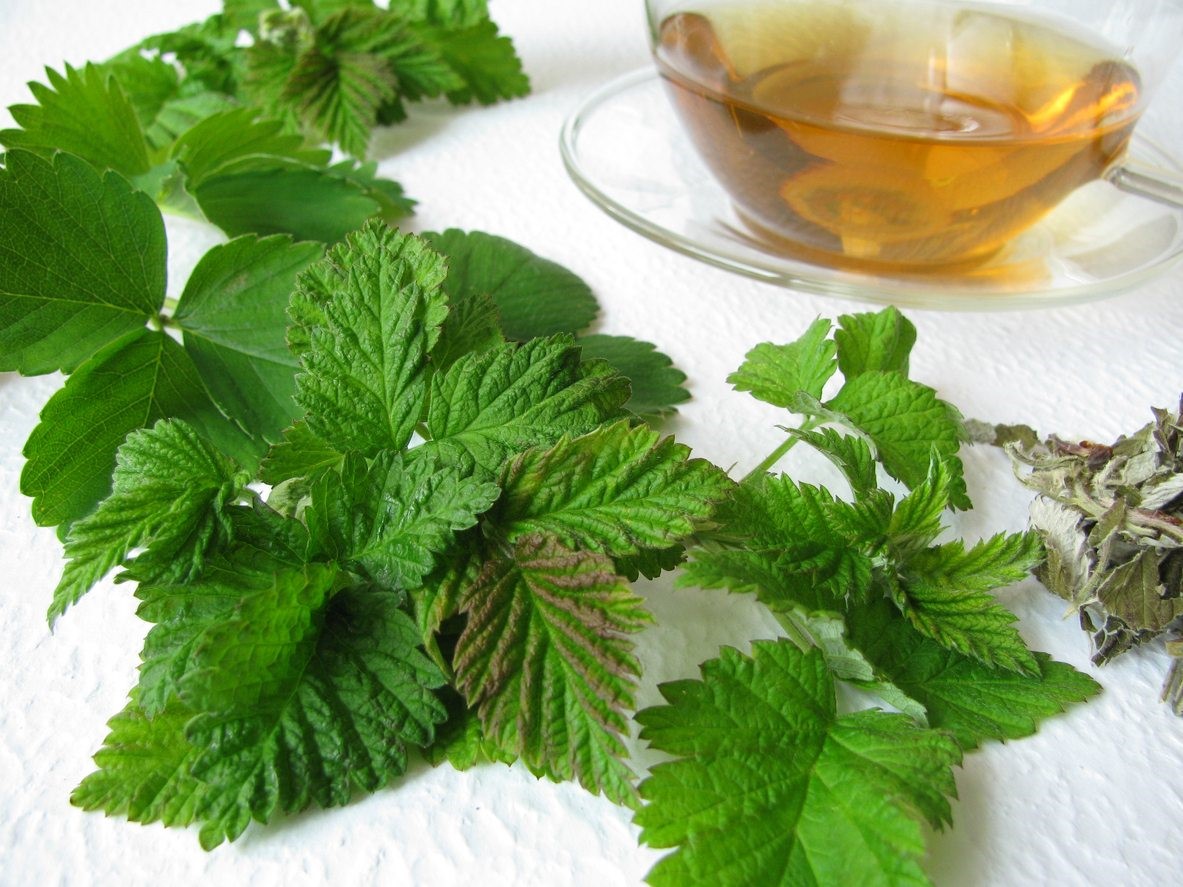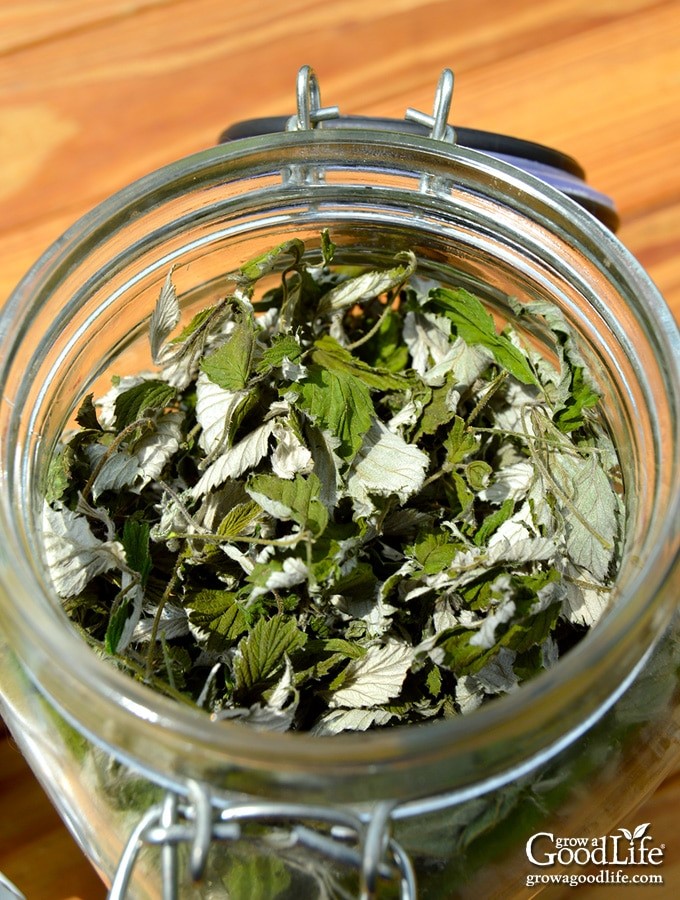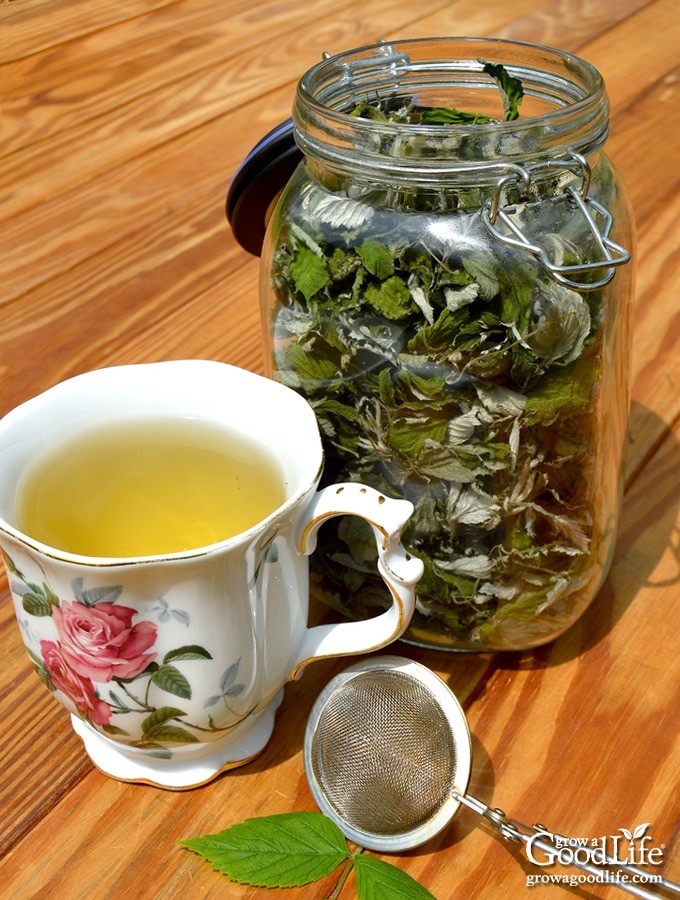I Can't Say Enough About the Natural Goodness of This Drink!
Want to know a tasty natural remedy you can easily make at home? And now's the time to consider this, too.
I'm talking about red raspberry leaf tea. It's a delicious herb with a taste similar to green tea, but without the caffeine.

Red raspberry leaf is a delicious herb with a taste similar to green tea. It's been used for centuries as a natural remedy for conditions involving the uterus (including pregnancy, childbirth, menstruation, and menopause), as an astringent for skin irritations, a gargle for sore throats, and as a relief for diarrhea. It can also lower blood sugar and has no known side effects or drug interactions.
The above-mentioned benefits are because of the presence of tannins and the alkaloid fragarine, combined with other nutrients (including calcium, iron, phosphorus, potassium, and vitamin B, C, and E). Research shows that together, these substances especially help tone and relax the pelvic and uterine muscles.
While you can easily find red raspberry tea in your grocery store, making your own ensures you have a fresher, truer product. It's easy to make, so why not? Here's what you need to know, per the expertise of the folks at one of my favorite sites, Grow a Good Life: Journey to a Self-Sufficient Life (www.growagoodlife.com). And BTW: even if you don't grow your own raspberries, you may well have neighbors who do. If not, consider asking your berry growers at your local farmers' markets if they'd consider saving their leaves for you.
Step 1: Collect raspberry leaves before the plant blooms. Now's the perfect time. Canes are just coming up and bearing their leaves. Harvest mid-morning after the dew has evaporated and before the sun gets hot (to preserve the oils and flavor). Wear gloves and long sleeves for protection from the thorns.
Like most herbs, once the plant begins to bloom, the leaves turn bitter. Select young, healthy leaves that have not been treated with chemicals or eaten by bugs, and clip them from the cane.
Heritage raspberries, an ever-bearing variety, are a good bet. They produce two crops each season (a light crop in July followed by a heavy crop in fall). Allow the canes to begin leafing out before pruning the raspberry patch in the spring. Cut whole canes and trim the young leaves off into a large bowl as you prune.
Step 2: Dry the raspberry leaves. You can either let the leaves dry naturally, or use a dehydrator to dry them faster. First, wash the leaves well with running water to remove dust and insects, then lay them out on a kitchen towel to let some of the moisture evaporate.
To dry the leaves naturally: Spread the leaves out on a screen and place them in an area away from dust and sunlight. Or you can gather the leaves by their stems, tie the ends, and hang them to dry. Depending on the humidity, drying usually takes 1-2 weeks.
To dry the leaves with a dehydrator: Spread the leaves out on the screens and dry at a low temperature (118 degrees or less) to preserve their enzymes. Check every 30-minutes until completely dry. You'll be amazed at how quickly they dry using a dehydrator.

Step 3: Store dehydrated raspberry leaves. Crushing a leaf or two will tell you when they're dry enough to store. It should crumble easily. Once the leaves are dry, place leaves (lightly packed) in a glass jar away; keep it out of direct sunlight. Try not to crush them (to reserve the flavor) until you are ready to brew your tea.

Step 4: Brewing raspberry leaf tea. To make the tea, use about 1-teaspoon of crushed, dried raspberry leaves per 8-ounce cup of boiling water. Steep for at least 5 minutes and drink like regular tea.

We grow mint (both spearmint and peppermint), and so I use the technique for preserving red raspberry leaves on our mint. I'll often combine our dried mint leaves with the raspberry leaves when making my tea. Let me know if you try this, or if you've already done so. I'd love to know what you think. I can't say enough about the natural goodness of this drink!
- www.growagoodlife.com
- www.gardeningknowhow.com
 Alice Osborne
Alice Osborne
Weekly Newsletter Contributor since 2006
Email the author! alice@dvo.com
